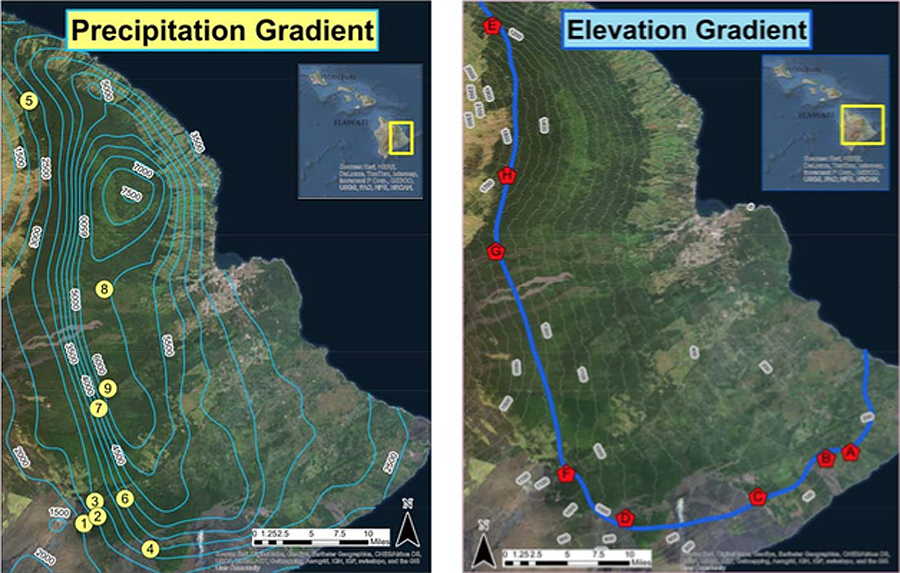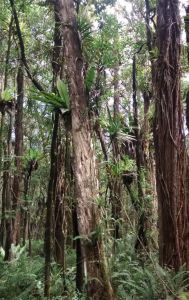Epiphytes as an indicator of climate change

Background
Epiphytes are specialized plants with a variety of adaptations that allow them to grow in the branches of trees. Plant distributions generally track climate, and epiphytic plants exhibit especially close-knit, climate-based constraints, since water supply is undoubtedly the most important determinant of epiphyte growth. Due to a strict dependence on the atmosphere for required moisture and nutrients, epiphytes are exceptionally sensitive to air quality and climate. Thus, shifts in rainfall patterns due to climate change make epiphytes especially vulnerable, and by extension, are particularly useful for monitoring shifts in climate patterns. Over the next 100 years, Hawai‘i will likely experience overall increasing temperatures with stronger warming at higher elevations. Studies suggest that occurrence and duration of droughts during the dry season, as well as the overall length of the dry season, may increase.
Current work

Hawai‘i has a range of climates suitable for epiphytes, including areas with ample rain and/or fog, but studies of epiphyte abundance and composition in Hawai‘i are few. Because epiphytes are among the most sensitive plants to atmospheric climate change, our main objective was to establish a baseline from which changes in epiphyte communities can be monitored as a leading near term indicator of likely Hawaiian forest change. We accomplished this by investigating patterns of epiphyte abundance and species composition across elevation and precipitation gradients on windward Hawai‘i Island. We established a series of forest study sites across the eastern portion of the island, representing a range of annual precipitation (2400-6400 mm/yr) at a given elevation (about 1100 m), and a separate set of sites representing a range of elevations (150-1700 m) at a given annual rainfall (3000 mm/yr). Overall, epiphyte communities showed much finer scale responses to climate variation when compared with structurally dominant vegetation. The precipitation gradient sites exhibited a clear increase in abundance of all epiphyte groups, and an increase in diversity, with increasing rainfall. The elevation gradient showed a marked difference in species composition above the level where fog incidence is highest. Overall, our results indicate that rainfall alone may not be as important for epiphyte abundance and composition as are other factors, including fog. As part of a pilot study to evaluate the potential importance of fog as a water source, we also monitored and sampled fog and rainfall at two sites of equal precipitation, Kohala and Volcano. We measured differences in the stable isotopes of the water as a way of tracking the source water that plants use. Results suggested that fog is the major contributor of precipitation in Kohala, whereas rainfall is predominant at Volcano, with varying isotopic compositions during different seasons.
PROJECT DETAILS
FUNDED:
FY2013
PI:
Jonathan Price
Assoc. Professor of Geography, UH Hilo
Co-PI:
Scarlett Kettwich
Department of Geography, UH Hilo

